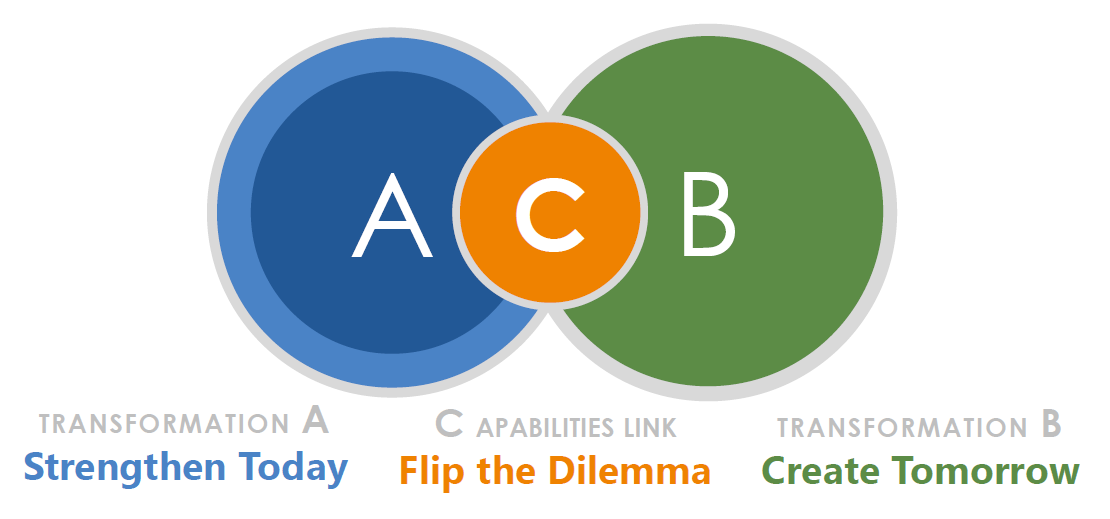
As many of you know, in the past few years City Vision University has launched three MOOC courses through Udemy as a part of what I (Andrew Sears) call our MOOC 1.0 experiment. Several others on the CHEIA list helped me develop two of the courses: Mike Truong, Amanda Forbes and Jay Gary.
The dominant model we were following in developing these courses was Dual Transformation (see diagram above). Here are some of the lessons I feel like we learned in our MOOC 1.0 experiment.
- To date we had 13,665 enrollments. Completion rates were low similar to other MOOCs, but I don’t view that as a bad thing.
- Dual transformation probably is the best model to think about disruption in regulated industries like Higher Education, but the key to get it to work is item C-capabilities link shown above.
- Essentially, what we did in our experiment was that our Transformation A and Transformation B were essentially misaligned. Our Transformation A focused on City Vision’s core competencies in Nonprofit Management & Addiction Counseling. Our Transformation B focused on a core competency in Innovative Online/Blended Education. The problem was that these were essentially two different markets, so we could not really build much of a capabilities link C between them. Ultimately this meant that the 1.0 MOOCs were not sustainable outside of grant funding because they did not produce a revenue stream.
- While we did get similar versions of these courses accredited, we actually never launched them because there was not an effective capabilities link.
- While Udemy was great for boosting numbers (which foundations like), they ultimately own the customer, so we never had email addresses. Ultimately, this severely limited our ability to convert Udemy students into paying students. In addition, Udemy recently pivoted to deprioritize free courses and limit their length to 2 hours of video, which is problematic.
- We were ultimately able to fund the development of these courses through grants and just donating our own time. Probably the most significant problem is that the halflife of most courses in 3 to 5 years, so unless there is an ongoing revenue stream, then it will not be financially sustainable to continue to update the courses.
This leads me to announcing our MOOC 2.0 experiment. City Vision University has just launched our City Vision Institute as our MOOC 2.0 experiment. The goal of the City Vision Institute is to provide Free Online Courses for Nonprofit and Ministry Leaders (http://institute.cityvision.edu). Here is what we are doing differently this time based on the lessons we learned:
- We are running the courses on Learndash in WordPress. This gives us a lot more control and allows us to essentially provide free MOOCs as a form of the freemium business model or content marketing since students provide email addresses in registering.
- We decided to focus our future courses around the core competencies of City Vision University so our content marketing efforts are attracting the type of people who may one day be students with us.
- When we do develop new courses or major redesigns of courses, we will identify some where we design them both in our LMS and in Learndash simultaneously.
- Students from the MOOC can pay $100 to get credit. For this to work with our accreditor, we essentially had to provide all the same assignments in a comprehensive workbook that students can submit to be assessed later. We limit this price to their first course, so we do not undercut our pricing for regular students.
- Ultimately, the most important part of this experiment is whether the freemium business model is self-sustaining on an ongoing basis. Ultimately, to continue to update courses, we have to be able to pay our cost to do that. While we could try to continue to be grant based, I’m skeptical whether that is viable long-term.
We will keep you all posted on how this next experiment goes.